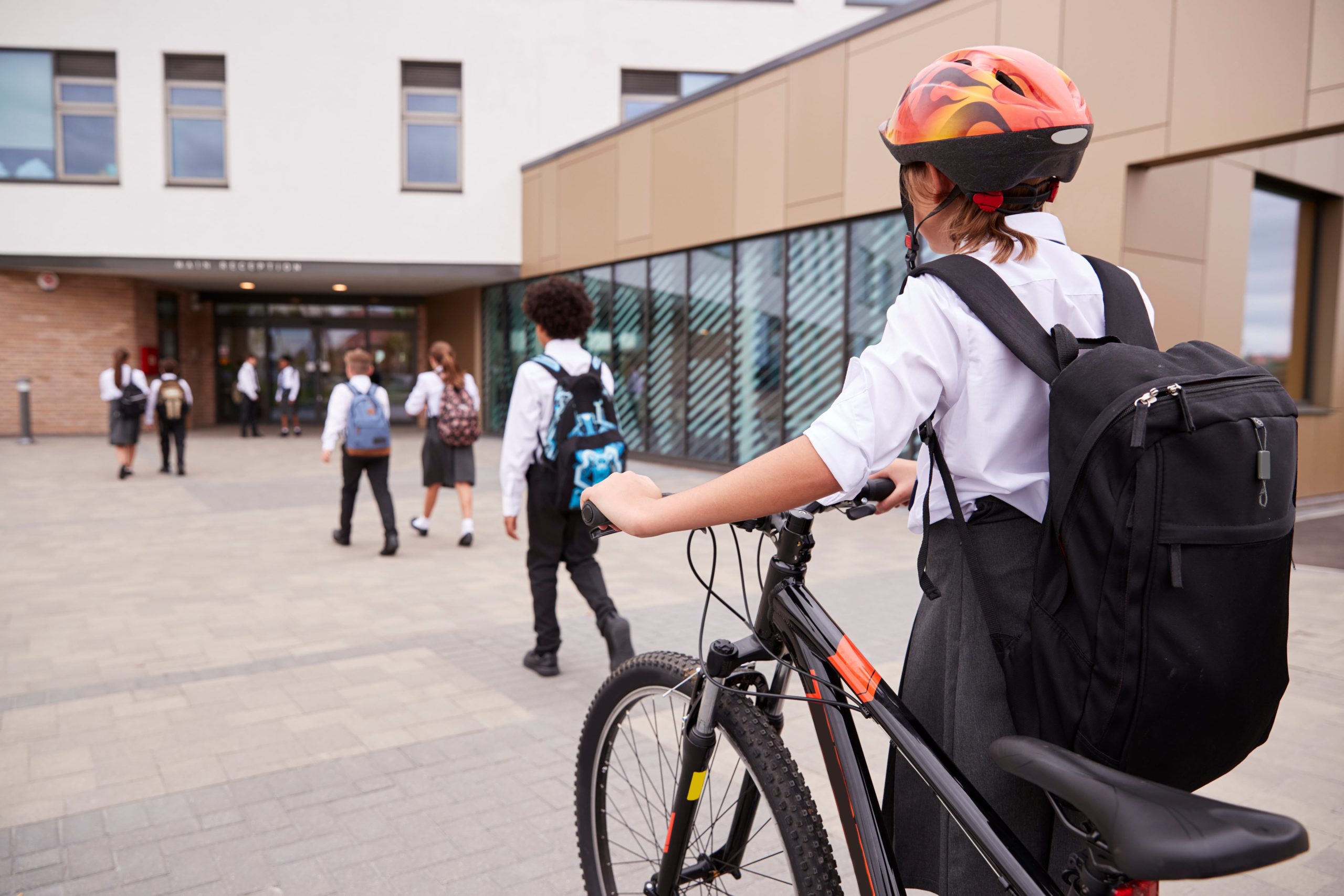BLOG
Crumbling classrooms | Watchdog report shines light on unsafe school buildings
Written on 14 July 2023

Ensuring the safety of students within school premises is a paramount responsibility for education leaders. However, a new watchdog report has shone light on the declining condition of school buildings in England and reiterated the urgent need for action to prevent harm to pupils and staff.
The report, published by the National Audit Office (NAO), sought to examine “whether the DfE is achieving its objective to ensure the school estate contains the safe and well-maintained school buildings that it regards as essential for a high-quality education”.
In the report, the NAO makes a number of concerning revelations, including that an estimated 700,000 children are being taught in unsafe or ageing school buildings that require repairs, and more than a third (24,000) of all school buildings in England have passed their estimated initial design life.
Alarmingly, it states that the DfE has, since 2021, assessed the risk of injury or death from a school building collapse as “very likely and critical”.
As well as being a major safety concern, the NAO says the deterioration of school buildings is damaging pupil attainment and teacher retention. Teachers have also told the BBC how this is preventing staff from providing high-quality education and contributing to higher energy bills.
Why are so many school buildings unsafe?
The DfE claims to have invested over £15 billion to ensure the safe operation of schools since 2015. Despite this, the NAO says that the risks associated with unsafe school buildings have not been adequately addressed due to chronic underfunding.
Indeed, the National Education Union’s joint general secretary, Kevin Courtney, says the government is spending “nothing like enough” on school buildings.
In the report’s conclusion, the NAO acknowledges that the DfE has improved its understanding of the general condition of school buildings, which has helped it to better allocate funding to where it is most needed. Still, it notes that there is a “significant gap” between the funding available and that which the DfE itself says is needed to ensure school buildings are kept in a good, safe condition for those who learn and work there.
Part of the problem, according to the NAO, is that funding is often used for urgent repairs rather than planned maintenance, which doesn’t offer good long-term value for money.
Due to this lack of funding and current cost pressures, many schools are being forced to put off necessary maintenance and repair work. One teacher told the BBC that “most of the cuts being made in school are on the building” and admitted that they are “using gaffer tape instead of having things replaced”.
Do you need support?
Speak to us for an honest, no obligation chat on:
0345 226 8393 Lines are open 9am – 5pm
What areas require urgent attention?
The NAO report identifies a number of building issues impacting safety, including:
RAAC
Reinforced autoclaved aerated concrete (RAAC) is a lightweight form of concrete. It was widely used as a construction material between the 1950s and mid-1990s and is susceptible to failure. The DfE has been considering RAAC as a potential issue since late 2018, after a roof containing RAAC suddenly collapsed at a primary school in Kent. Fortunately, the incident occurred at a weekend, meaning there were no casualties.
The DfE has confirmed the presence of RAAC in 65 schools in England, of which 24 required immediate action. However, it’s thought that it could be present in as many as 572 schools across the country.
The NAC report recommends “that government, led by DfE and with support from responsible bodies, should: a determine by when, and through what means, it plans to have fully dealt with RAAC as a safety issue across the school estate so that it is no longer a critical risk”.
Jon Carter, Health & Safety Consultant at WorkNest, says: “RAAC panels are typically hidden behind finishes such as suspended ceilings or plasterboard. I’m finding that the schools I go into at the moment are generally aware of the problem and have established whether or not RAAC is present.
“Those who aren’t sure should refer to the DfE’s guidance, which provides advice about making an initial inspection as well as what to do with their findings.”
Where RAAC is identified in schools, the DfE announced that it will provide funding to mitigate any immediate risk.

Asbestos
A survey conducted by the DfE in 2018 found that more than 80% of schools had identified asbestos, including 97% of system builds. While carefully maintained asbestos does not pose a significant health risk, disturbing it can release fibres that cause serious diseases.
The NAO’s report suggests that the risk of disturbing asbestos is greater in buildings that are deteriorating or require repair work.
Jon says: “Where buildings are of an age where asbestos may be present, we look for clients to have had an asbestos survey by a competent inspection body, accredited by UKAS, to identify whether asbestos is present, what type it is, and where it is located.
“Schools should maintain an asbestos plan and register, which should be brought to the attention of anyone whose work may put them at risk of disturbing it. We advise that the plan and register is kept updated through a regular review process so that any changes are recorded and the most up-to-date information is available to those who need it.”
He adds: “We also advise that areas containing asbestos are marked. Where work is to be carried out in areas where asbestos is present, we recommend that a risk assessment is carried out and that suitable precautions are taken to ensure that the release of asbestos fibres is prevented if the substance is disturbed by the works.”
The DfE published guidance in March 2015 (updated October 2020) to help responsible bodies safely manage asbestos in their schools.
Other issues
The third major issue highlighted in the report is system-built school buildings, which may be more susceptible to deterioration, potentially leading to a higher risk of hidden structural defects.
Additionally, off the back of the report, the BBC spoke to school leaders about their experiences and uncovered further issues, including raw sewage coming up through the floors “on many occasions” and “unbearable” classroom temperatures.
Who's responsible for keeping school buildings safe?
The DfE has overall responsibility for the school system in England. It sets the policy and statutory framework and has ultimate accountability for securing value for money from the funding provided to schools, including for school buildings.
However, as the NAO reiterates, the ‘responsible body’ in control of the school, usually the relevant local authority, academy trust or voluntary-aided body, must manage the condition of its buildings and ensure they are safe, and should contact the department with any concerns.
Jon explains: “In addition to annual safety audits to examine the safety of the building and its occupants, including a variety of maintenance aspects, schools are expected to commission condition surveys as part of their responsibilities to maintain the physical condition of school buildings. These are non-intrusive surveys, normally timed to cover five-year planning periods, but the inspection frequency should be proportionate to the risk presented by the existing condition, age and type of building.”
He continues: “Ultimately, should an incident occur due to a failure to properly maintain school buildings, the dutyholder will be held responsible. For most schools, the dutyholder will be the employer. Who the employer is varies with the type of school.”
But with many schools citing a lack of funding, would this provide a legal defence? Jon says “it depends”.
“It will come down to which law they are accused of breaching”, he explains. “If prosecuted under Section 2 or 3 of the Health and Safety at Work etc Act 1974, for example, schools may be able to claim a defence if they could show that it wasn’t reasonably practicable to do the work, meaning that the time, effort and expense involved was disproportionate to the risk presented by the hazard. However, if you’re likely to kill or seriously harm someone, I doubt many courts would accept that as a defence. Other, secondary, legislation may have more stringent requirements.”

What should schools do now?
In line with their responsibilities, DfE expects responsible bodies to identify, assess and manage safety issues, including those related to school buildings.
Where building safety issues are identified, Jon recommends that schools should:
- Take immediate action to prevent harm to any person who may be at risk from the unsafe condition. Where necessary, limit access to those who are involved in resolving the problem so that people are not put at unnecessary risk.
- Notify the employer (the entity with responsibility) about your concerns and keep records of your communications.
- Seek professional advice about the nature and extent of the problem, and the recommended remedial solutions. Follow the advice provided by competent professionals.
Unfortunately, the DfE does not generally provide additional funding for responsible bodies to address these safety concerns, although it does provide additional financial support where a school finds itself in exceptional circumstances.
What happens next?
A DfE official said the government was investing in 500 projects for new and refurbished school buildings, through its school-rebuilding programme.
“We will always provide support on a case-by-case basis, if we are alerted to a serious safety issue by these responsible bodies,” the official added.
The government does not have to respond to the NAO’s recommendations, but the report will be used as evidence in an ongoing parliamentary inquiry into the state of schools.
Related Content

GET SUPPORT
Discover Our Fixed-Fee Health & Safety and Employment Law Services for Education
Specialist safety support for schools
WorkNest helps schools to reduce the likelihood of incidents arising out of poor maintenance by providing support and challenge through a comprehensive audit process.
Conducted by a named consultant, your WorkNest General Risk Assessment will thoroughly assess the safety of your buildings and their occupants and includes a variety of maintenance aspects.
Following the assessment, your consultant will provide advice about your compliance with the requirements of legislation, work with you to address and shortcomings, and signpost you to specialist support where necessary.
Together with comprehensive resources and software for organising and recording maintenance tasks, we help to simplify the task of keeping your school safe.
For more information, contact us on 0345 226 8393 or request your free consultation using the button below.








